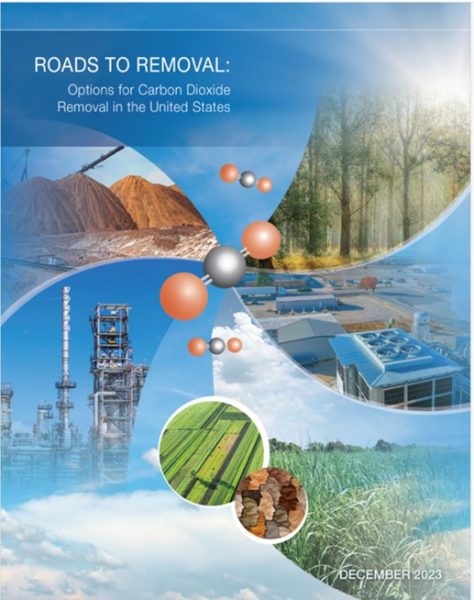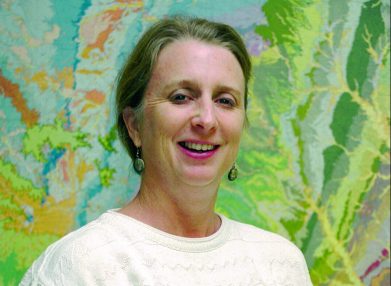New Report Explores Opportunities for CO2 Removal Across USA
December 11, 2023

The University of Texas at Austin is a collaborator on a new, first-of-its-kind report that explores different opportunities for carbon dioxide removal across the United States.
The report, called “Roads to Removal: Options for Carbon Dioxide Removal in the United States,” charts a path for the United States to achieve a net-zero greenhouse gas economy by 2050 by addressing the root cause of climate change: CO2 emissions.
Scientists at Lawrence Livermore National Laboratory led the report in partnership with collaborators from more than a dozen institutions. The report analyzes different CO2 removal techniques, the costs associated with them, and the regions where they could be effectively deployed across the country.
“Every geographical region has a unique story, as well as an opportunity to help take enough CO2 out of the air and meet our net-zero emissions goal by 2050,” said Lawrence Livermore’s Jennifer Pett-Ridge, the report’s lead author.

The report analyses four key methods of CO2 removal: soil and forest management, biomass conversion, direct air capture and geological storage – which diverts CO2 emissions underground for permanent and safe keeping. It covers the entire country, with the report reviewing CO2 removal feasibility and capacity, ecological effects, affected populations, infrastructure and costs for all 3,143 counties across the United States, including Alaska and Hawaii.
Researchers at UT’s Gulf Coast Carbon Center contributed to the geological storage portion of the report.
“The CO2 came from deep underground, so putting it back is a very reasonable thing to do,” said co-author Sue Hovorka, a research professor at the Gulf Coast Carbon Center. “What we do is put it deep underground in geologic environments where it will be isolated from the atmosphere.”
The report also includes an energy, equity and environmental justice index designed to help identify counties with the greatest opportunities where carbon removal can bring co-benefits with minimal risks.
“In this report, we identify highly vulnerable counties that could maximally benefit from [carbon dioxide removal] management approaches in forests and agricultural soils,” said co-author and Lawrence Livermore scientist Kim Mayfield. “We also identify counties experiencing inequitable job losses in traditional energy sectors. These counties may become early adopters of innovative [carbon dioxide removal] approaches such as biomass for carbon removal and storage.”
The report concludes that with today’s technologies, removing 1 billion metric tons of CO2 per year will annually cost roughly $130 billion in 2050, or about 0.5% of current GDP. The ensemble of lowest-cost approaches for CO2 removal would create more than 440,000 long-term jobs and can be achieved using renewable energy sources with currently available land and below-ground geologic storage.
According to the report, more than half of the land area in the nation has the potential for safe CO2 geological storage.
“This report opens more opportunities to explore for storage in deep geologic formations that can accept and store large volumes of captured CO2,” said Hovorka.
The Gulf Coast Carbon Center is part of the Bureau of Economic Geology, which is a research unit of the UT Jackson School of Geosciences.
Additional collaborating institutions on the report include Oak Ridge National Laboratory, Lawrence Berkeley National Laboratory, North Carolina State University, University of California—Berkeley, Colorado State University, Indiana University, Yale University, University of New Hampshire, Iowa State University, University and University of Pennsylvania.
The Roads to Removal report, along with fact sheets, maps, videos and a complete author list, is available at roads2removal.org, a public service website launched by the Livermore Lab Foundation and Climate Now, with funding support from Breakthrough Energy, ClimateWorks Foundation and the Grantham Foundation for the Protection of the Environment.
In 2024, Roads to Removal authors will host a series of community stakeholder symposia to share report specifics and discuss the carbon removal opportunities unique to each region. Dates and locations of these free symposia can be found at roads2removal.org.
For more information, contact: Anton Caputo, Jackson School of Geosciences, 210-602-2085; Monica Kortsha, Jackson School of Geosciences, 512-471-2241.
